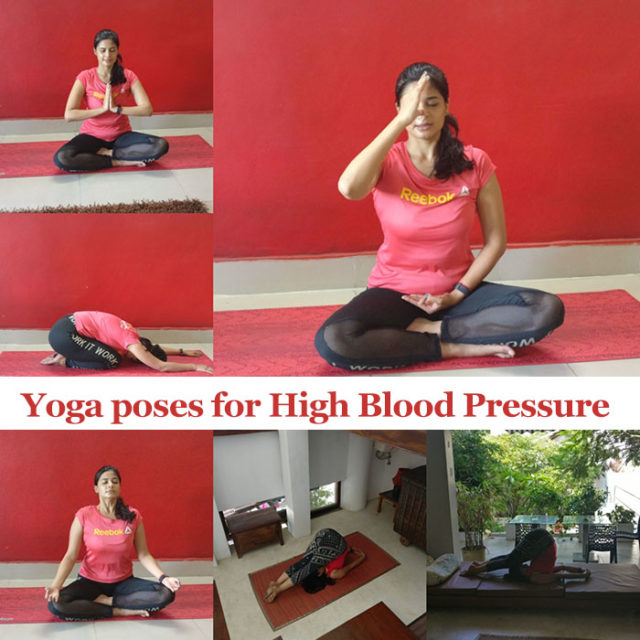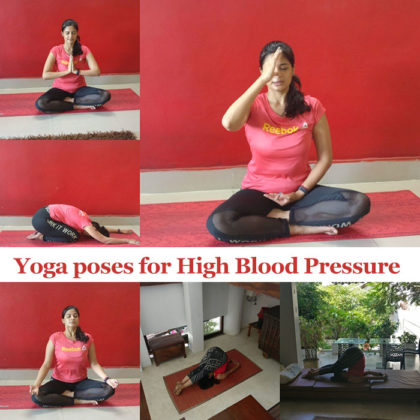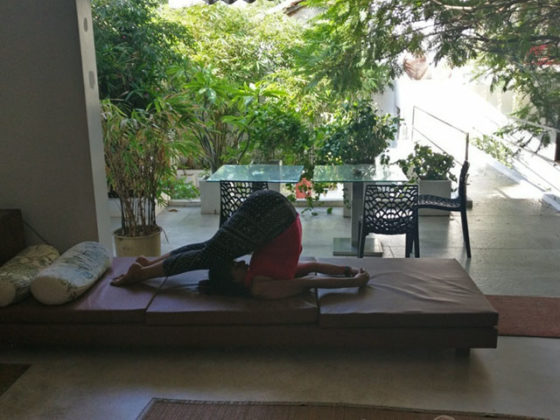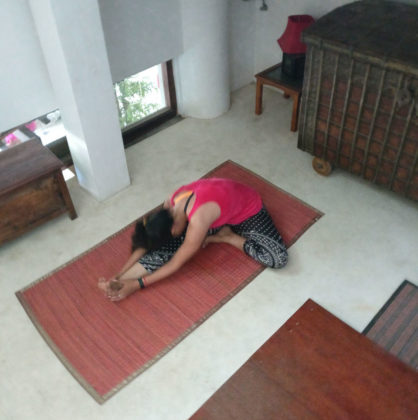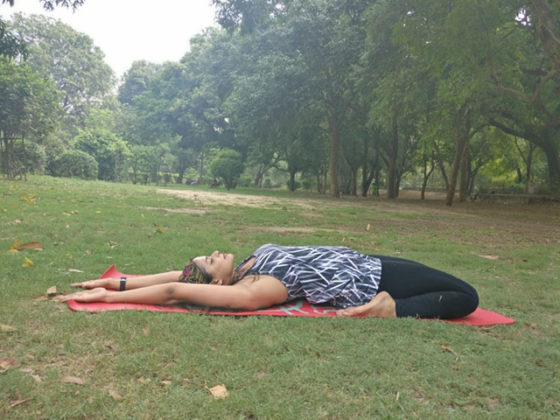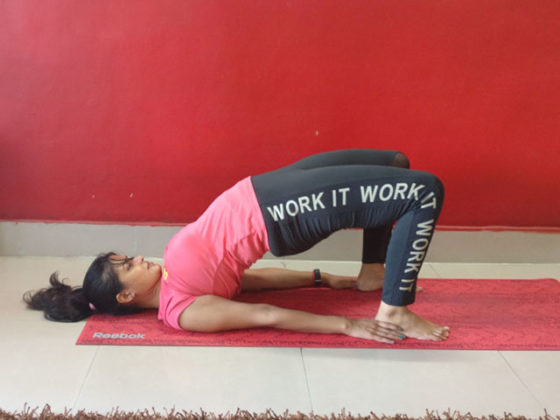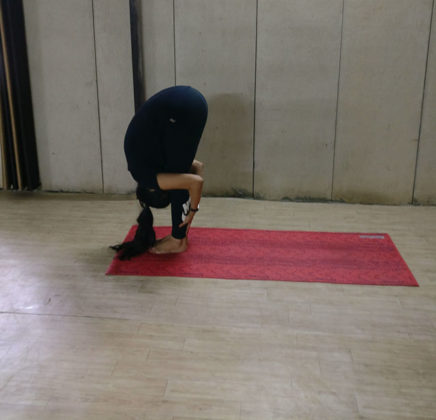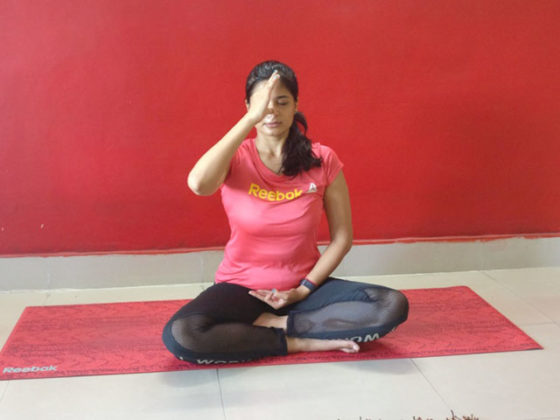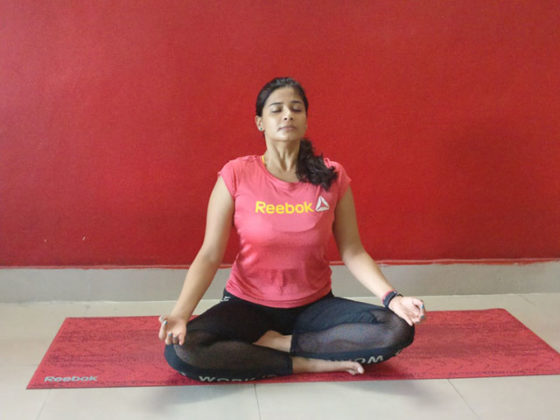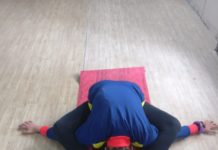Work pressure, relationship traumas, excessive competition has resulted in major health issues. One of the most common ones is definitely high blood pressure. Hypertension or high blood pressure is a condition when the vessels/pipes carrying blood to your heart called arteries receive a high pressure of blood that strain the heart and disturbs its smooth function. It is detected when your blood pressure becomes lower than 140/90 (optimal is 120/80). Prolonged high blood pressure can cause heart attack and kidney disease, and may also lead to dementia.
Yoga can be a great exercise to relax the heart muscles relax by slowing down the blood flow and even reducing the blockages or cholesterol level that may cause this condition. Following are some of the asanas that you can follow to give your heart the right balance to function at its best.
Halasana
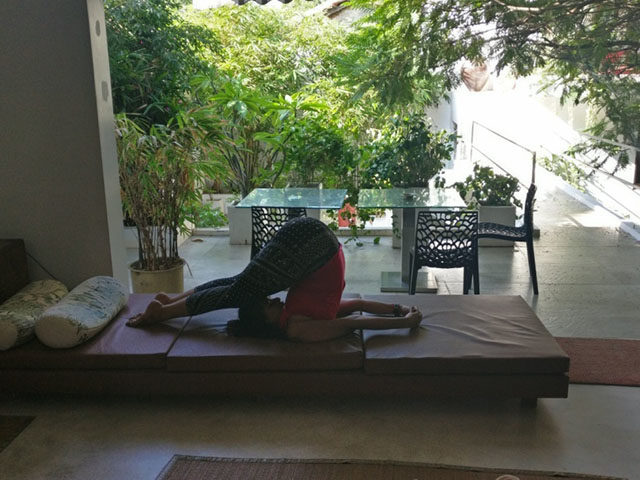
Hala means a plough. Halasana yoga pose is to align your body like a plough. This Asana combined with Sarvangasana will help in relieving the sensation of fullness in the head caused by rush of blood in case of High B.P.
Steps
- Lie Flat on the back on the floor
- Exhale and raise the legs over and beyond the head and touch the toes on the floor. Keep the toes on the floor and make the legs stiff at the knees.
- If you have difficulty in keeping the toes on the floor, then place a pillow, stool or chair for support. This will not increase the fullness in the head.
- Extend the arms over the head, keep them on the floor and stay in this position with normal breathing for three minutes.
- Throughout the asana, gaze at the tip of nose while your eyes closed
Janu Shirsasana
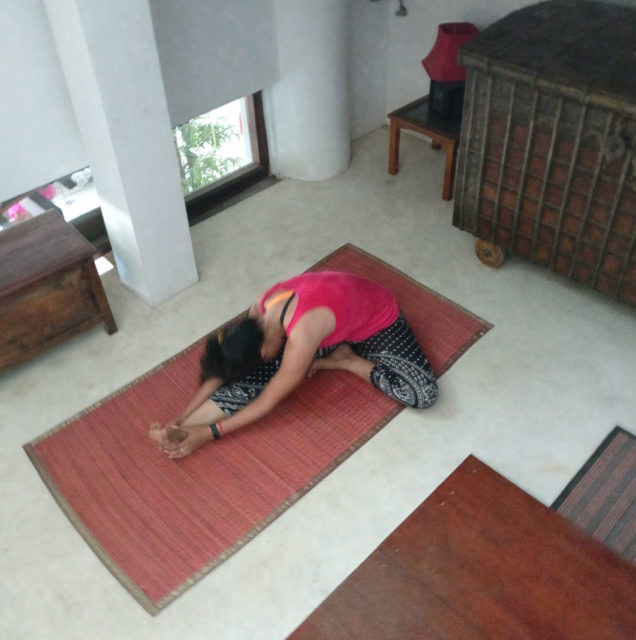
Janu means the Knee and shirsa is another word for head in Sanskrit.
Steps
- Sit on the floor, with legs stretched in front
- Bend the left knee and place the left foot on the left inner thigh.
- Try to reach to reach towards the right big toe with both your hands and keep the back straight.
- Go with deep breaths forward, and remember to push yourself a little forward every time you exhale.
- If you are not able to reach the foot, hold the ankle/shin/knee, but keep challenging yourself and keep pushing forward.
- Tighten the knees and keep the right leg straight during the asana.
- Exhale and extend your trunk forward by bending and widening the elbows. Rest the forehead first on the leg, then the nose and then the lips and chin.
- Do not let the right foot tilt to the right side
- Keep on pulling the trunk forward and keep the chest against the thighs.
- Inhale to raise the head and slowly return to the normal posture. Repeat on the other side.
Virasana
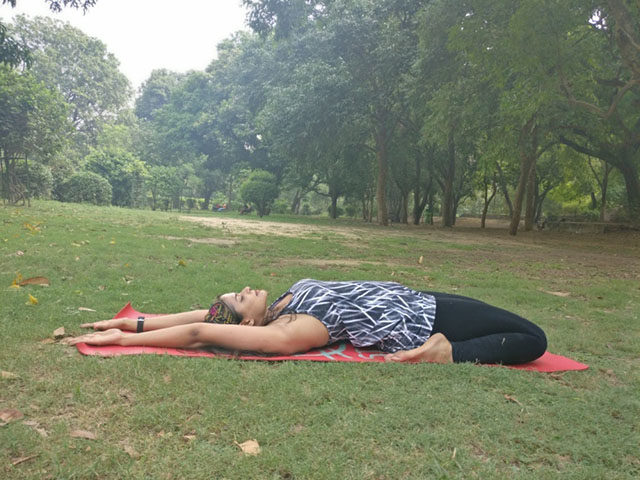
Virasana or the hero pose is an excellent pose to regulate flow of blood in your knees. It helps in increasing digestion and cures the problem of flat feet.
- Kneel on the floor and keep your knees together
- Spread the feet 18 inches apart
- Rest the hips on the floor, but not the body on the feet. The feet are kept by the side of the thighs. Now place your palms on the knees and face the palms up. Join the tip of the thumbs and forefingers, keeping the rest of the fingers extended.
- Stretch the back erect
- Stay in this pose for as long as you can. You can keep the eyes close and breath deep.
Setu Bandhasana
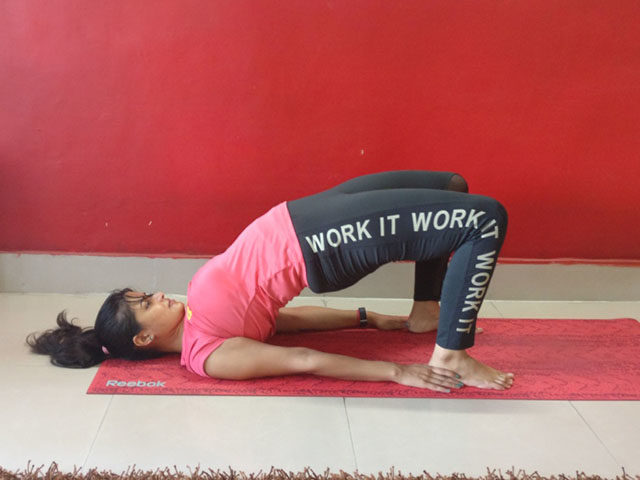
Setu means bridge; setubandhasana is all about aligning your back in a way that it looks like a bridge. This pose helps in regulating the blood flow in the body. The back becomes strong and pain is relieved. It’s a good pose to be practiced in between of difficult asanas as it cools down the body and lowers the heartbeat.
Steps
- Lie down on your back with your leg straight
- Extend your hands so you can hold the ankles from outside or just keep your hands near the ankles.
- Inhale and shift the body on your shoulder and neck and raise your chest up.
- Deepen the curve on your back by joining the shoulder blades and pushing the upper arms inside the bridge.
- Stay there for some time and do deep breathing.
Padhasthasana
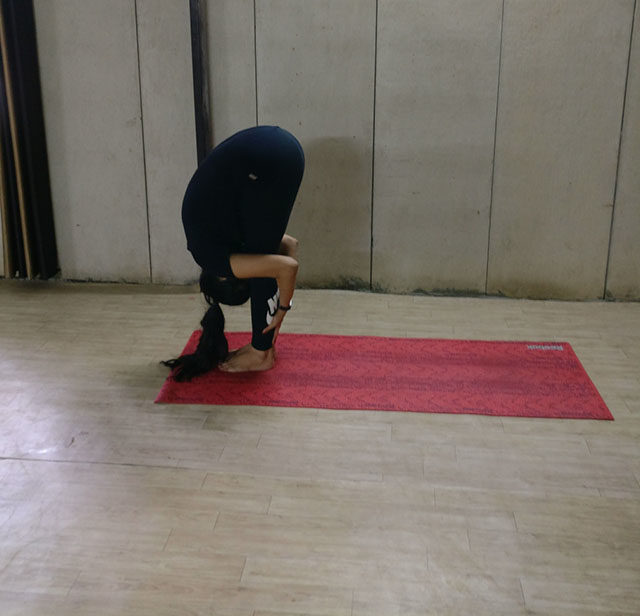
This asana helps in relieving the stress and helps in relaxing the breath speed.
Steps
- Stand with your feet together, inhale take both the arms up.
- Exhale out completely, squeezing your abdomen and take both the hands towards the feet. Make sure your back is flat and knees are erect.
- You can bend your knees a little in case you have back pain. Otherwise keep your leg straight and move as much forward as possible.
- With every exhalation move a little forward than before.
Nadi sodhana pranayam without retention
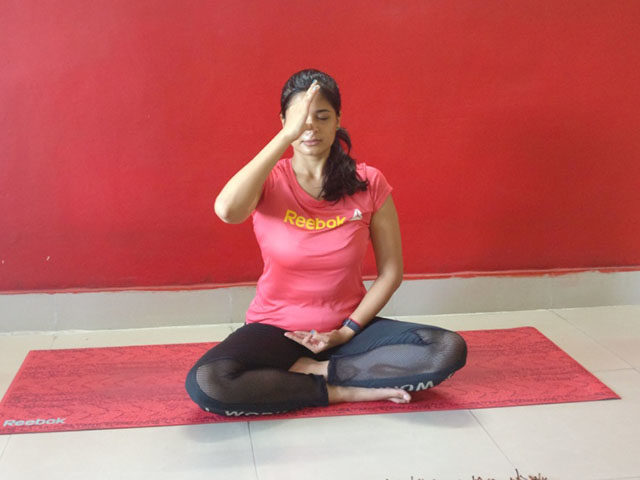
Blood pressure variations are caused due to irregular flow of blood in our circulatory system. The circulation of blood is directly related to circulation of breath. Hence it is important to regulate the breath with pranayam practices. One of the best pranayam for the same is the Nadi Shodhan Pranayam. This prananayam is done by activating the nostrils and focusing on removing obstacles in our respiratory system.
Steps:
- Sit in a comfortable position or sukhasana.
- Now block your right nostril and inhale through the left. Breathe in slowly without any added pressure.
- After inhaling through the left nostril, block it with your ring finger and remove your right thumb from the right nostril.
- As your remove the thumb, exhale through the right nostril slowly.
- Now block the left nostril and inhale through the right.
- Keep on exhaling through the opposite nostril and inhaling from the exhled side.
- Close your eyes and focus on your heart and give positive suggestion to your body to stay relaxed.
- 5 minutes of Nadi shodhan is great for High B.P. After completing it, lie down in shavasana or be seated for at least five minutes with your eyes closed.
Ujjayi Pranayam
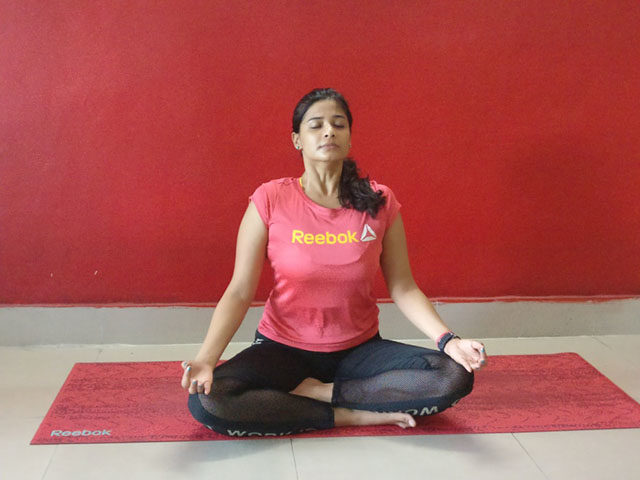
Ujjayi pranayam is all about expanding the chest like a proud ruler! It’s about opening up the lungs by filling it with oxygen so the parasympathetic nervous system of the body is activated. Ujjayi pranayam removes phlegm, gives endurance and soothes the entire nervous system. If done in reclining position, it is beneficial for people suffering from High B.P.
Steps
- Sit in sukhasana or in a reclining position.
- Extend your arms and keep your wrist on the knees.
- Make gyan mudra with your hands (join the thumb tips with index fingers and stretch the rest of the fingers straight.
- Close the eyes and look inwards
- Take a slow deep breath using both the nostrils. As the breath flows in, you will feel the air on the upper palate. The breath will make an audible sound (sa) at this time.
- Keep breathing in deep until you fill in your lungs completely. Make sure your abdomen goes in as you inhale.
- Now slowly exhale out slowly and completely.
- The exhalation will make a sound (ha) as the air brushes through the roof of the palate
- In case of very high B.P: Do the Ujjayi Pranayam followed by Nadi shodhana and culminate with 15 minutes shavasana

















